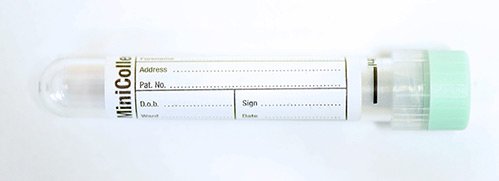AFP (Alpha-foetoprotein)
Chemical Pathology
Notes
- As with most tumour markers there is a high incidence of false positive and false negative results; AFP is most appropriately used in monitoring disease progression or effectiveness of treatment once diagnosis of the tumour has been made AND serum concentrations of these markers have been shown to be raised prior to treatment.
AFP is a possible marker of:-
- Non-Seminomatous Germ Cell Tumours (NSGCT) of testis, ovary and other sites (raised in 40-60% of cases but rarely in stage 1 disease)
- Hepatocellular Carcinoma (HCC) ( raised in 70-90% of cases)
- Hepatoblastoma (very rare in adults)
- Use AFP in combination with beta-HCG to monitor NSGCT
- Do not use for metastases to liver
Sample requirements
If patient on high dose biotin therapy (>5mg/day) collect sample at least 8 hours after the last dose
For adults, blood taken into a 5mL gold top tube (or rust top for the Acute Unit)

For children, blood taken into a 3.5mL rust top tube

For neonates, blood taken into a 0.8 mL minicollect lithium heparin tube

Storage/Transport
Send at ambient temperature to the laboratory. If unavoidable, samples can be stored refrigerated overnight
Required information
Relevant clinical details including known or possible diagnoses (e.g. baseline level prior to treatment or follow up).
Turnaround times
The assays are run throughout the day Monday to Friday. The in-lab turnaround time is less than 1 week.
Reference ranges
Alpha-foetoprotein assayed using the Cobas AFP ECLIA.
Reference range: less than 6 kU/L
AFP may be raised in the following non-malignant conditions:-
- Hepatitis
- Cirrhosis
- Biliary tree obstruction
- Alcoholic liver disease
- Ataxia telangiectasia
- Hereditary tyrosinemia
AFP may be raised in the following physiological conditions
- Pregnancy
- 1st year of life ( falls to within adult levels between 6-12 months)
The ½ life in blood is 5 days
Further information
BMJ 2009; 339: b3527 Serum tumour markers: how to order and interpret them
Page last updated: 20/04/2021